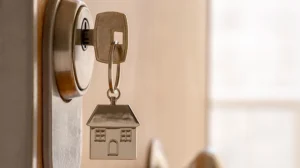In the Australia of the 2020’s and perhaps for the past 100 years, the private trust has and continues to be the investment vehicle of choice. From farmers to politicians, from the rich to the want-to-be-rich, the discretionary (or often called family) trust is the favoured investment and business structure.
The trust affords wealth preservation with wealth creation, usually tax effectively. It can even manage the third wealth trilogy – wealth distribution.
Adopting the family discretionary trust is often a key part of strategic planning but not understanding it, is planning to fail; the risk of failure is heightened by ignorance of the trust.
The Australian Taxation Office captured the essence of a trust when it said;
A trust is an obligation imposed on a person or other entity (the trustee) to hold property for the benefit of beneficiaries. While in legal terms a trust is a relationship not a legal entity, trusts are treated as taxpayer entities for the purposes of tax administration.
There are very many trusts in Australia, superannuation and unit trusts amongst these. However, the most common is the family discretionary trust. This is simply a trust (relationship) where the trustee can exercise a discretion as to many things such as, who gets what, how much and when from the trust and what to invest in.
The term discretionary trust is often interchangeable with family trust because it is commonly focussed around the one family. It is not a formal legal term. So, what does this actually mean?
Discretion is the ability (or more legally correctly, the duty) for the trustee to exercise a judgment or decision. A discretionary trust is one where the trustee enjoys a degree of freedom in their decision making. Importantly and usually, this discretion applies in respect of the trustee's ability to pay income and/or capital of the trust to or among beneficiaries.
The Trust Deed is critical. This contains the words that describe the rules, powers, duties and discretions of the trust. The Trust Deed determines exactly how far a trustee (or potentially another person's) discretion extends. A truly discretionary trust will be where the trustee has full and absolute discretion in deciding how to make distributions of income and capital of the trust amongst the trust's beneficiaries.
In the modern environment however, tailored asset protection is becoming increasingly important to many. This often results in more careful planning and thought in drafting the terms of a trust. This is why many modern Trust Deeds may limit some aspects of the Trustee's discretion.
So why are discretionary trusts, in whatever degree that discretion presents itself, so popular?
Accountants, lawyers and financial planners get very excited by discretionary trusts because they see two major advantages; asset preservation or protection and income tax distribution efficiency.
Asset Protection
A discretionary trust separates ownership from control. Ownership by the trustee for the benefit of the beneficiaries of the discretionary trust can keep assets out of harm's way from claims against a person and what they personally own.
In a bankruptcy, all that a person owns is exposed to their creditors. But what is specifically excluded from the property that a person holds in a bankruptcy claim is property held by the bankrupt in trust for another person.
This will even be the case where the person may, as director of the trustee company, also have significant influence over the trustee and the day-to-day actions of the trustee!
Such protection is possible because beneficiaries of a discretionary trust generally have no entitlement to any of the assets or income of the trust, unless the trustee exercises its discretion in their favour. This aspect of a discretionary trust makes it one of the most effective asset protection strategies for general family wealth. The way in which the trust is managed does however affect the extent to which asset protection is actually achieved.
A discretionary beneficiary differs from a default beneficiary. It is good to know the difference and where you sit. From a trust law perspective, a discretionary beneficiary possesses nothing more than a 'mere expectancy'. That is, they have an expectancy to be considered among the class of persons from whom the trustee may choose when the trustee exercises its discretion to benefit beneficiaries, but nothing more.
By contrast, a default beneficiary has a contingent interest in that if the trustee does not exercise discretion to benefit any within the general class of beneficiaries, the default beneficiary shall become entitled to the income or capital over which the trustee had a right to exercise its discretion.
Because of this contingent interest, default beneficiaries have greater rights than pure discretionary beneficiaries, though both are still within the context of a discretionary trust.
To know the difference and what this means requires a careful reading of the trust deed. This is the most effective and practical thing to do, it enables some understanding of what will be the wealth safe harbour for the family.
Tax Effectiveness
A discretionary trust enables flexibility for income distribution among a defined class of beneficiaries, commonly structured around a family. Trustee income allocation decisions can have regard to tax-specific individual circumstances. Such 'income splitting' can effectively minimise overall family tax obligations if the trustee wisely chooses to distribute the trust income to the beneficiaries that have any unused tax-free threshold or a lower marginal tax rate. For instance, trust income may be paid to a husband or wife who is on a lower tax rate or to a private company associated with that person. The way a trustee distributes income can be changed from year to year to reflect differing needs and circumstances.
The flexibility of a discretionary trust also commonly allows distributing different classes of income to different beneficiaries (often called 'income streaming'). Such income streaming ensures that different tax treatment applied to different classes of income is best utilised by having regard to specific circumstances of the beneficiaries. For example, net capital gains can be suitably allocated to beneficiaries with capital losses. However, whether this ability is available to the Trustee or not will depend on the specific terms of the trust deed.
Again, the terms of the trust deed must be read, considered and understood. This is the blueprint for the operation and effectiveness of the trust, especially when it is needed the most. Making discretionary decisions about a trust and its wealth without having read the trust deed is walking blind along a path and hoping it is safe.
The taxation rules surrounding the discretionary trust have tightened. A formal 'family trust election' needs to be made where the trust will receive and pass on franking credits or it wishes to use income or capital losses to offset against future gains. Such election has the effect of restricting the trustee's discretionary decision making to a limited and recognised class of persons.
The class of persons among whom the trustee can exercise discretion for taxation purposes is identified by reference to a test individual. This is why the decision must be carefully made.
Conclusion
So how discretionary is a family discretionary trust? The answer is, it depends. It depends on the terms of the trust deed, whether a family trust election has been made, and generally it depends on how the trustee determines to manage the administration of the trust.
Usually this is done with an eye to safely quarantine the wealth and to manage it tax effectively among the family around whom the trust is designed.
For further information or assistance please do not hesitate to contact a member of Coleman Greig’s Taxation and Trusts team, who would be more than happy to assist you today.












